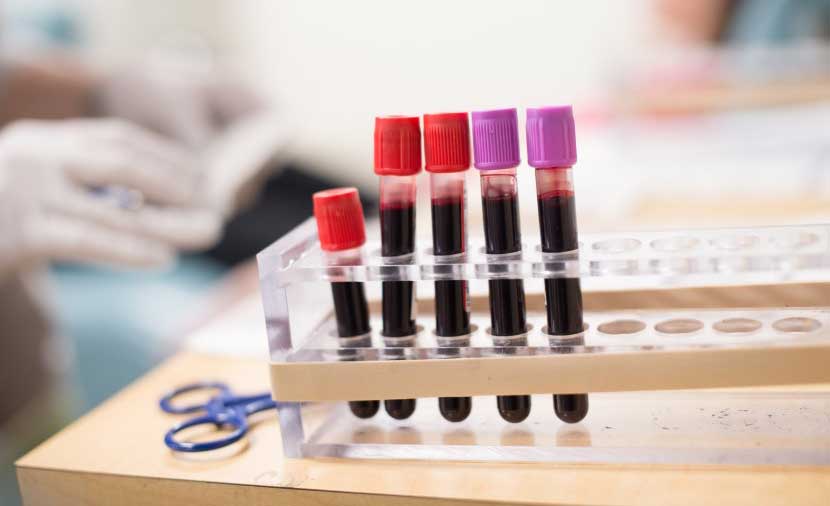Inequities Based on Sex, Race/Ethnicity and Age Detected in Blood Donation and Transfusion Trials
Julie Silver, MD, and colleagues found that despite the FDA's guidance regarding reporting requirements, researchers frequently fail to report complete demographics of blood donation and blood transfusion trial participants, and females, most racial/ethnic groups, and older adults are sometimes substantially underrepresented.
- This study examined participation in interventional blood donation and blood transfusion clinical trials by comparing the sex, race, ethnicity, and age of participants to the overall U.S. population
- Females and males were equally represented in blood transfusion trials, but in blood donation trials, females were substantially underrepresented (29%)
- Inclusion rates of multiple racial and ethnic groups was consistently low in both types of trials, especially when various diagnostic categories were considered
- Of 24 blood transfusion trials that enrolled adults, only two (8%) reported participation of individuals ages 65 and older
- Patient-focused studies should explore barriers to participation and interventions that might guide equitable enrollment in future trials
Blood transfusion is a life-saving therapy that depends on the altruistic actions of donors. People belonging to racially/ethnically underrepresented groups accounted for almost 20% of blood donations in 2019, according to research published in Transfusion.
Now, researchers at Massachusetts General Hospital have explored the demographics of participants involved in blood donation and blood transfusion clinical trials. They found various groups have been substantially underrepresented, including females, many racial/ethnic groups, and older adults.
Julie K. Silver, MD, physiatrist at Spaulding Rehabilitation Hospital and associate professor/associate chair in the Department of Physical Medicine and Rehabilitation at Harvard Medical School, and colleagues present the details in Transfusion and Apheresis Science.
Methods
On January 19, 2022, a single author searched Clinicaltrials.gov for records of U.S. pediatric and adult interventional trials that contained the term blood donation, blood donors or blood transfusion.
Trial Attributes
The analysis included seven blood donation trials (n=24,707) and 31 blood transfusion trials (n=9,500), all undertaken between July 2003 and August 2020:
- All blood donation trials reported sex and age, but only 71% reported race, and only 42% reported ethnicity
- All blood transfusion trials reported age, and 97% reported sex, but only 52% reported race, and only 39% reported ethnicity
Sex
21,987 of the participants in blood donation trials were enrolled in a single trial that did not report sex. When sex data on the other 2,720 participants were compared with 2019 U.S. Census data, women were substantially underrepresented (29% despite being 50% of the general population).
Females and males were equally represented in blood transfusion trials.
Race/Ethnicity
In both types of trials, Hispanic/Latino/a/x people accounted for 8% of participants but were 18% of the general population in 2019. There were consistently low rates of enrollment (<3%) for Native Hawaiian/Other Pacific Islander and American Indian/Alaska Native participants, regardless of age group.
Age
Twenty-four transfusion trials enrolled adults or both adults and children/adolescents. Still, only two (8%) included patients ages 65 and older, even though they are more likely than other age groups to require blood transfusions.
Diagnostic Categories
White individuals were 73% of the general population in 2019 but accounted for 88% of participants in blood transfusion trials focused on cardiac disease/procedures and 82% in those focused on thrombocytopenia. These observations are particularly salient given that hypertension, obesity, and diabetes disproportionately affect non-Hispanic Black/African American and Hispanic/Latino/a/x individuals.
More encouragingly, children/adolescents comprised 45% of participants in blood transfusion trials focused on sickle cell anemia, and 95% of participants of any age were Black/African American. However, Hispanic/Latino/a/x individuals were remarkably underrepresented in sickle cell anemia trials — 3% despite comprising 10% to 15% of U.S. individuals with this condition.
Research Implications
Demographic information is incomplete in blood donation and transfusion trials even though the FDA requests this data and recommends a standardized approach for collection and reporting. Patient-focused studies should explore barriers to participation and interventions that might increase trial enrollment by underrepresented groups.
Key Stats
- 29% of blood donation trial participants were female
- 88% of participants in blood transfusion trials focused on cardiac disease/procedures were White
- 8% of blood transfusion trials included adults ages 65 and older

